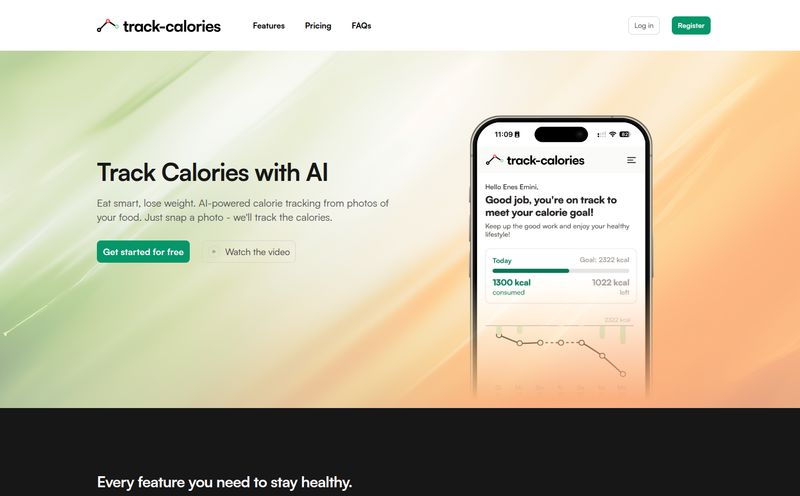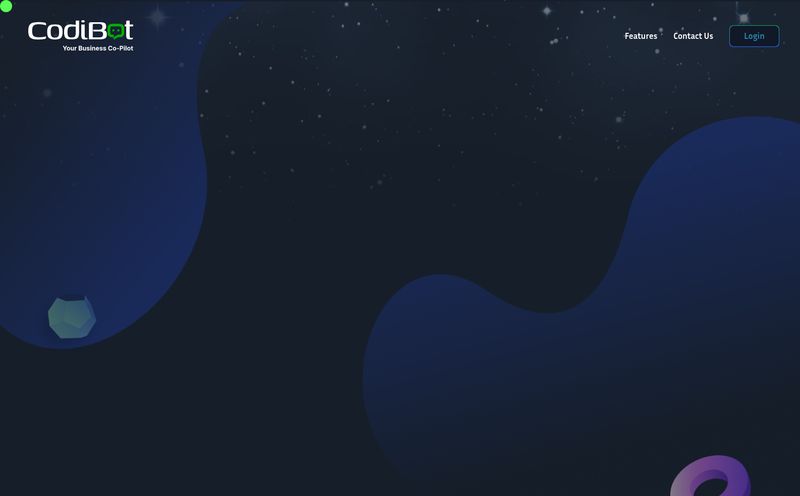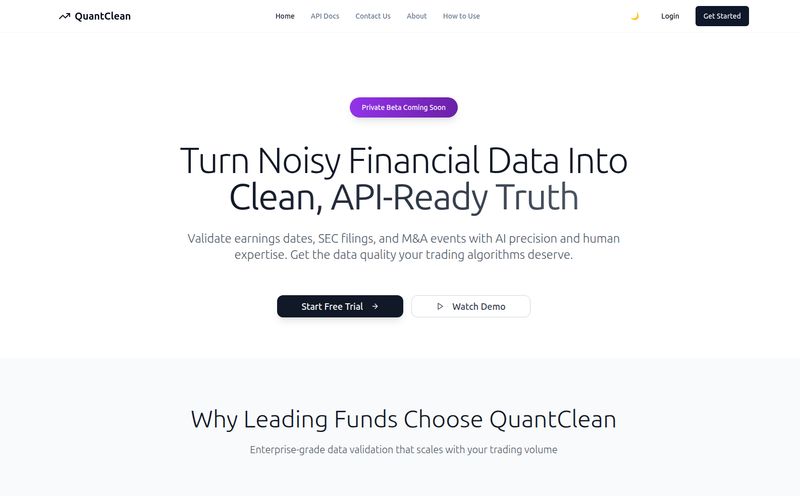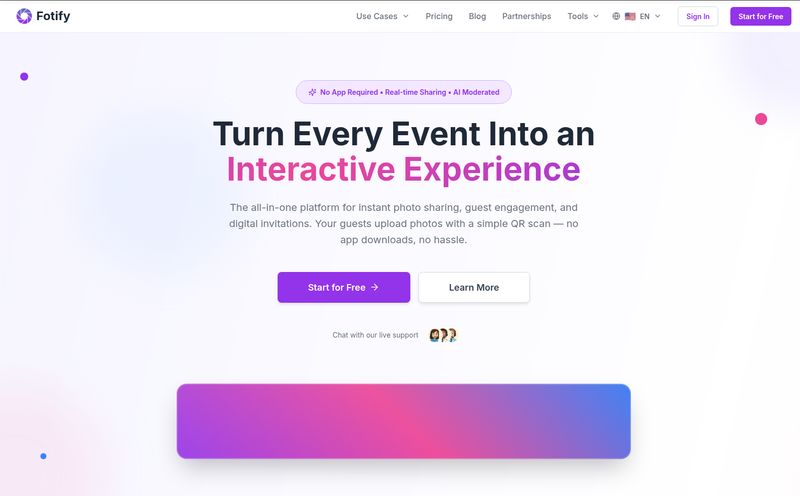If you've spent any time in the trenches of AI, especially in the medical field, you know the chasm. The huge, gaping void between a brilliant research paper with a 99.8% accuracy rate and an actual, usable tool that a doctor can rely on in a clinic. It's a beast. You've got messy data, insane regulations, and systems that don’t talk to each other. It’s enough to make you want to throw your GPU out the window.
For years, it felt like everyone was reinventing the wheel. Building their own data loaders, their own augmentation pipelines... all for medical images that have their own unique quirks. It was fragmented. It was slow.
Then along came MONAI. And I've got to say, it felt like a breath of fresh air.
What on Earth is MONAI? (And Why Should You Care?)
MONAI stands for Medical Open Network for AI. At its heart, it’s an open-source framework built on top of PyTorch, which, if you're a developer, is fantastic news because you're probably already familiar with it. Think of it as a specialized, souped-up toolkit—or maybe a giant Lego set—specifically designed for the challenges of AI in medical imaging.
It's not just another academic project. This thing is backed by some serious heavy hitters, including NVIDIA and King's College London, and it's being used by major players like Siemens Healthineers and UCSF. It's built for the entire lifecycle of a medical AI project, from the initial messy data to the final deployment in a hospital. And the best part? It's Apache 2.0 licensed. That means it's free to use, modify, and build upon. No strings attached.
The MONAI Ecosystem: A Look Under the Hood
MONAI isn't just one single thing; it’s a whole ecosystem designed to work together. The project is smartly broken down into three main pillars that cover the entire process. Honestly, seeing it laid out so clearly was a big 'aha' moment for me.
MONAI Label: Finally, Sane Data Annotation
Let's be real, annotating medical images is a grind. It's time-consuming, expensive, and requires expert knowledge. MONAI Label is designed to make this less painful. It's a tool that helps you create high-quality datasets with AI-assisted annotation. It integrates with viewers you already know and love, like 3D Slicer and OHIF, and uses things like active learning to intelligently suggest which images to label next. This means your radiologists or experts spend their time on the most impactful data, not just mind-numbing clicking. A huge win.
MONAI Core: The Engine Room of Your AI Model
This is the main event. MONAI Core is the framework where you actually build, train, and validate your models. It's packed with domain-specific tools that you'd otherwise have to code from scratch. We’re talking about medical-specific data transforms for things like 3D CT scans, a whole “Model Zoo” of pre-trained models to give you a running start, and state-of-the-art network architectures ready to go. It brings the best practices from the research community right into your codebase, standardized and ready to use.
MONAI Deploy: From the Lab to the Clinic
This might be the most important piece of the puzzle. Getting a model to perform well in a Jupyter notebook is one thing. Getting it to work within a hospital's complex IT infrastructure is another world entirely. MONAI Deploy is built to bridge this gap. It provides a robust system for packaging your AI model and integrating it into clinical workflows. Crucially, it has built-in support for healthcare standards like DICOM and FHIR, which is non-negotiable for any tool to be taken seriously in a clinical setting.
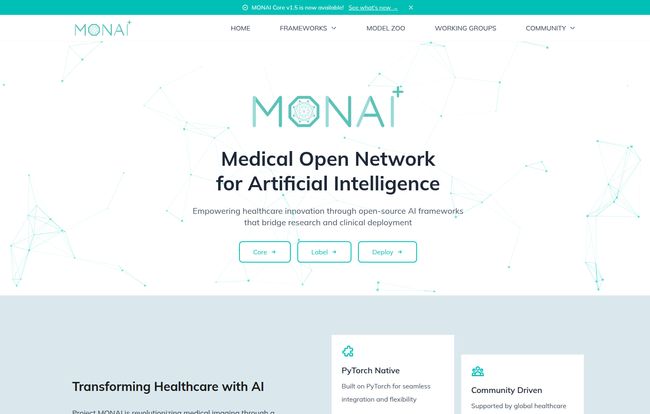
Visit MONAI
The Good, The Tricky, and The Code-Heavy
No tool is perfect, right? I'm always skeptical of anything that claims to be a silver bullet. After spending some time with MONAI, here’s my honest take.
The good stuff is pretty amazing. The fact that it's open-source and backed by a massive, active global community is its biggest strength. You can see the constant stream of contributions on their GitHub, ask for help in their Slack channels, and find a growing library of tutorials. It truly feels collaborative. The partnerships with institutions like Mount Sinai show that this isn't just theory; it’s being put to the test in real-world scenarios, which gives me a lot of confidence. The end-to-end approach, from Label to Deploy, means you're not patching together five different tools to get one job done.
Now, for the reality check. MONAI is not for the faint of heart. To really make the most of it, you need a solid understanding of both AI concepts and the basics of medical imaging. This isn't a drag-and-drop, no-code platform. You’ll be in Python, you'll be working with tensors, and you'll need to know what you're doing. Secondly, training these models requires some serious horsepower. Be prepared to have access to powerful GPUs and the budget for that compute time. And finally, and this is a big one, deploying any AI in a clinical setting is a minefield of regulatory validation. MONAI gives you the tools, but it doesn't solve the FDA/CE mark clearance for you. That part of the journey is still very much on you.
So, Is MONAI Really Free? Let’s Talk Cost
This is a question I see a lot. When people hear "open-source," they often hear "free." And yes, the MONAI software license is free. You will not pay a licensing fee to use it.
But as the old saying goes, it’s free as in a puppy, not as in a beer. The total cost of ownership is far from zero. You have to factor in:
- Compute Resources: Training deep learning models on high-resolution 3D medical images requires high-end GPUs. This can mean a significant investment in hardware or a hefty cloud computing bill.
- Developer Time: Your team will need time to learn the framework, implement the pipelines, and troubleshoot. While MONAI speeds things up, it doesn't eliminate the need for skilled (and well-paid) AI engineers and data scientists.
- Validation and Regulatory Costs: As mentioned before, getting a medical AI tool approved for clinical use is a long and expensive process involving rigorous testing and documentation.
So, MONAI is an incredible value, but it's an investment in a platform, not a free lunch.
Getting Your Hands Dirty with MONAI
Feeling brave? Ready to give it a try? The best place to start is the official MONAI website. It's got links to everything you need. They just released MONAI Core v1.5, so it's a great time to jump in and see the latest features.
I strongly suggest checking out their tutorials repository. They have a ton of example notebooks that walk you through common tasks, from a simple 2D classification to a complex 3D segmentation. It’s the best way to get a feel for the code and the workflow. The community support via GitHub and Slack is also your best friend. Don't be shy—the community is generally very welcoming to newcomers.
The Final Word
So, is MONAI the definitive answer to all our medical AI problems? Of course not. But it is, in my opinion, one of the most significant steps forward for the field in the last several years. It's a powerful accelerator that standardizes the boring stuff so that researchers and developers can focus on genuine innovation.
It's lowering the barrier to entry for creating high-quality, reproducible medical AI. By bringing together the best practices from academia and the robust needs of industry, MONAI is successfully bridging that chasm between the lab and the clinic. And for anyone working to bring AI into healthcare, that is very exciting indeed.
Frequently Asked Questions about MONAI
- 1. What is MONAI?
- MONAI (Medical Open Network for AI) is a free, open-source PyTorch-based framework designed to help researchers and developers build and deploy AI solutions for medical imaging. It provides a complete ecosystem of tools for the entire AI lifecycle.
- 2. Who is MONAI for?
- MONAI is primarily for AI developers, data scientists, and researchers who have some experience with Python and deep learning frameworks like PyTorch. It's not a no-code tool, so it requires technical expertise.
- 3. Is MONAI really free to use?
- Yes, the MONAI software is free under the Apache 2.0 license. However, implementing it requires investment in computational resources (like GPUs), developer time, and potentially significant costs for clinical validation and regulatory approval.
- 4. What is DICOM and why is its support in MONAI important?
- DICOM (Digital Imaging and Communications in Medicine) is the international standard for medical images and related information. MONAI's support for DICOM is critical because it allows AI applications built with it to integrate seamlessly into existing hospital IT systems and clinical workflows, which almost universally use the DICOM standard.
- 5. Who are the main backers of Project MONAI?
- MONAI is a community-driven project with strong institutional backing. It was co-founded by NVIDIA and King's College London and is supported by a large, global community of academic and industry partners.
- 6. Can I contribute to MONAI?
- Absolutely! MONAI is an open-source project that thrives on community contributions. You can contribute by reporting issues, improving documentation, or even adding new features. Their GitHub page is the best place to start.
